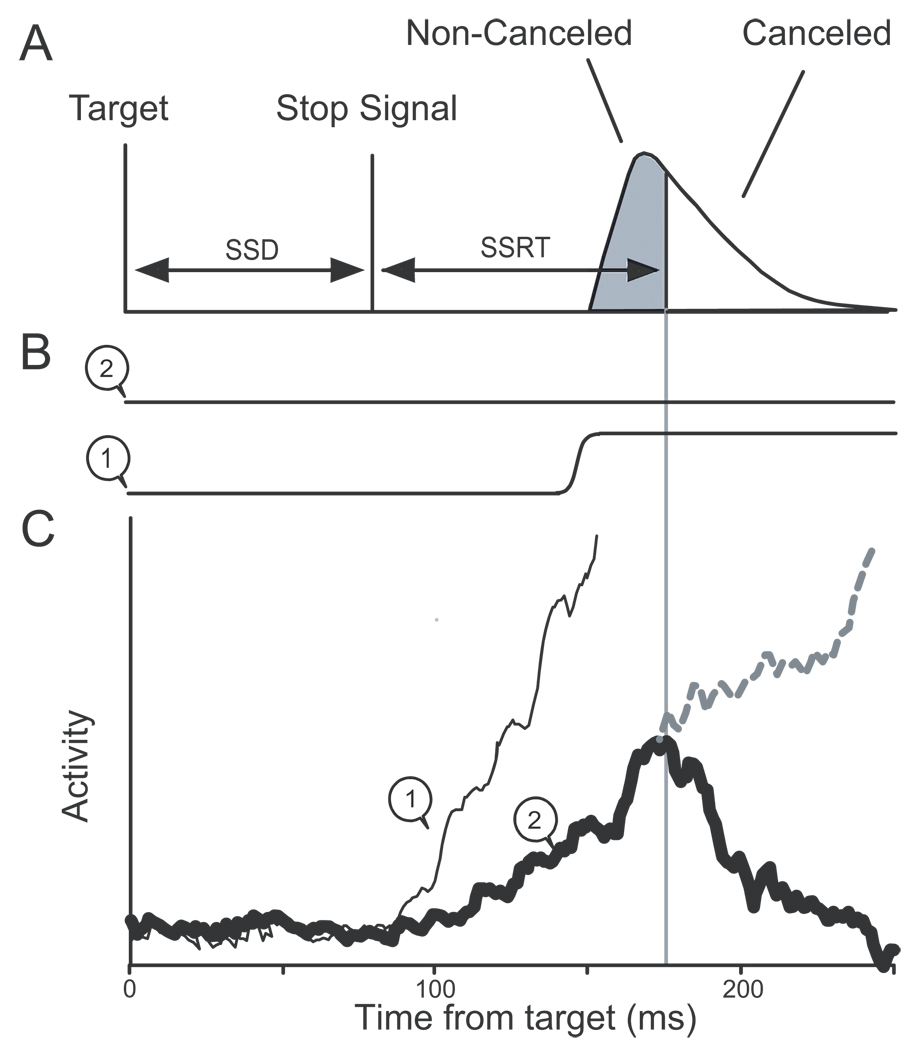Figure 1.
Investigating the neural basis of saccade preparation with the countermanding task. A. The race model of countermanding performance. A representative distribution of saccade latencies is illustrated with the characteristic single mode and extended tail. A stop signal presented a particular stop signal delay (SSD) after the target signals the subject to withhold the planned movement. The probabilistic outcome depends on the timing of the stop signal relative to the dynamics of the process that will initiate the saccade. The time needed to cancel the saccade, called stop signal reaction time (SSRT), marks the time when a covert STOP process interrupts preparation of the saccade. Accordingly, SSRT partitions the saccade latency distribution into early values corresponding to non-canceled trials because the saccade was initiated before the STOP process could exert influence and later values corresponding to canceled trials because the saccade was initiated late enough to allow the STOP process to interrupt preparation. B. Eye position for canceled (1) and noncanceled (2) trials. C. Activity of a representative FEF movement neuron in the different types of trials. Saccades are initiated when the activity of these neurons reaches a fixed threshold. If the movement-related activity increases quickly to reach the threshold before the SSRT, a non-canceled trial results (1, thin line). If the activity increases slower so that it would reach the threshold later (2, dashed line), then the STOP process invoked by the stop signal interrupts the growth of activity (thick solid line), preventing it from reaching the threshold so that the saccade is not initiated.

